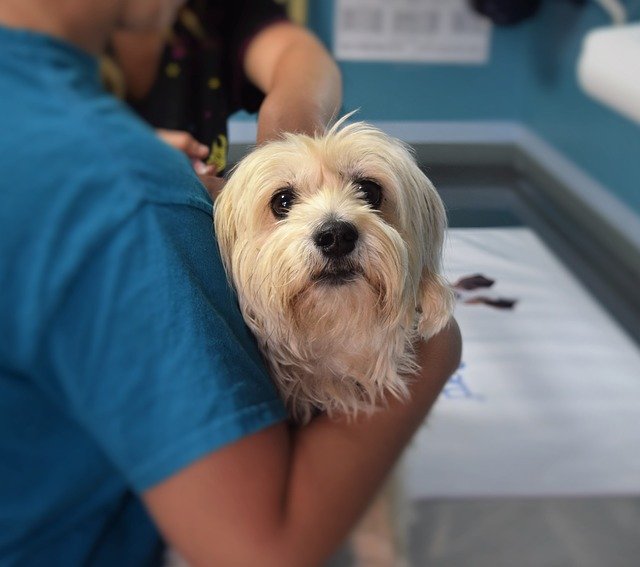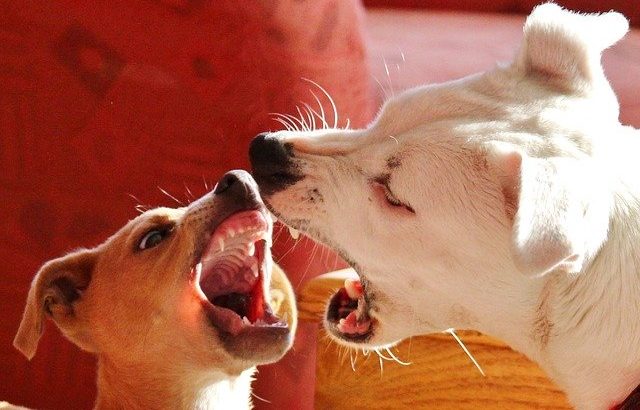How to Handle Aggressive Pets at Your Veterinary Clinic
You’ll likely encounter aggressive pets when running a veterinary clinic. Research, in fact, shows only one in three pets remain calm at veterinary clinics. Because it’s an unfamiliar environment with new signs and new smells, many pets experience anxiety at veterinary clinics. Of course, it’s difficult to diagnose and treat a sick or injured pet if he or she is exhibiting signs of aggression. Maybe a client’s dog is showing his teeth, or perhaps a client’s dog is trying to nip you. As a veterinarian, you must learn how to safely handle aggressive pets such as this.
Keep a Cool and Calm Demeanor
Maintaining a cool and calm demeanor goes a long way in minimizing aggression in pets. Pets are highly intuitive and will pick up on your mood. If you are loud and aggressive, the pet may mimic your behavior by acting aggressively as well. Therefore, you should keep a cool and calm demeanor when handling aggressive pets. Speak slow and softly when talking to clients about their pets. And when you begin to physically handle a client’s pet, be as gentle as possible. You’ll have an easier time handling aggressive pets at your veterinary clinic if you keep a cool and calm demeanor.
Avoid Eye Contact
As most veterinarians know, eye contact is a common stimulus of aggression in dogs. In the wild, dogs challenge their littermates by staring. Two dogs may growl while staring at each other until one of them backs down. The dog that doesn’t back down is then declared the dominant dog.
Domesticated dogs still carry this behavioral trait in their genes, which is why many of them become aggressive from direct eye contact. If you encounter an aggressive dog at your veterinary clinic, you should avoid making eye contact with him. Instead, try to hold the dog so that he can’t see your face. This alone can turn an otherwise aggressive and hostile dog into a calm and happy patient.
Keep Hands Away From the Pet’s Face
In addition to avoiding eye contact, you should keep your hands away from the pet’s face. If a pet is exhibiting signs of aggression — showing teeth, growling, panting, licking lips, etc. — he may bite you. Most dogs won’t bite their owners. They may, however, bite an unfamiliar veterinarian or veterinarian assistant. And even a bite from a small dog, such as a Chihuahua, can leave open wounds that are prone to infection. To err on the side of caution, keep your hands away from the pet’s face. You can usually restrain aggressive dogs by gently holding them in the nook of your elbow as shown in the image below.

Distract With a Treat
You can often distract aggressive pets by offering them a treat. If a client’s dog or cat is acting aggressively, place a treat in the palm of your hand and hold it front of the pet. Many pets will immediately change their disposition when upon sensing a nearby treat. They’ll generally stop barking and, instead, focus on the treat. At the very least, this will give you a small window of time to handle the pet. Alternatively, it may completely calm the pet for the entire duration of the appointment. Regardless, you should keep a container treats on hand at your veterinary clinic for aggressive pets.
Cover the Pet’s Eyes With a Towel
Another tactic used by veterinarians to handle aggressive pets involves covering the pet’s eyes with a towel. Pets, especially dogs, often exhibit signs of aggression when exposed to various forms of stimulus, including the sights of a veterinary clinic. A simple solution for instances such as this is to cover the pet’s face with a towel. You obviously don’t want to smother the pet’s face with a towel. Instead, place the towel loosely over the pet’s face so that you safely handle him in a more relaxed, less-aggressive state.
Use a Muzzle
When all else fails, you can use a muzzle to handle aggressive pets at your veterinary clinic. A muzzle won’t necessarily calm an otherwise aggressive pet. It will, however, protect you and your veterinary clinic’s staff from being bitten. Just remember to use a muzzle in an appropriate size. If a muzzle is too small, it may constrict the pet’s face while causing pain or discomfort. If a muzzle is too large, on the other hand, the pet may be able to bite through it.
Consider Medication
Medication, such as sedatives, can be used to restrain aggressive pets. Keep in mind that medication should only be used as a last resort. If a client’s pet is highly aggressive to the point where it jeopardizes your safety, medication may be a solution. With that said, you can typically handle aggressive pets using alternative methods, including those listed above.

